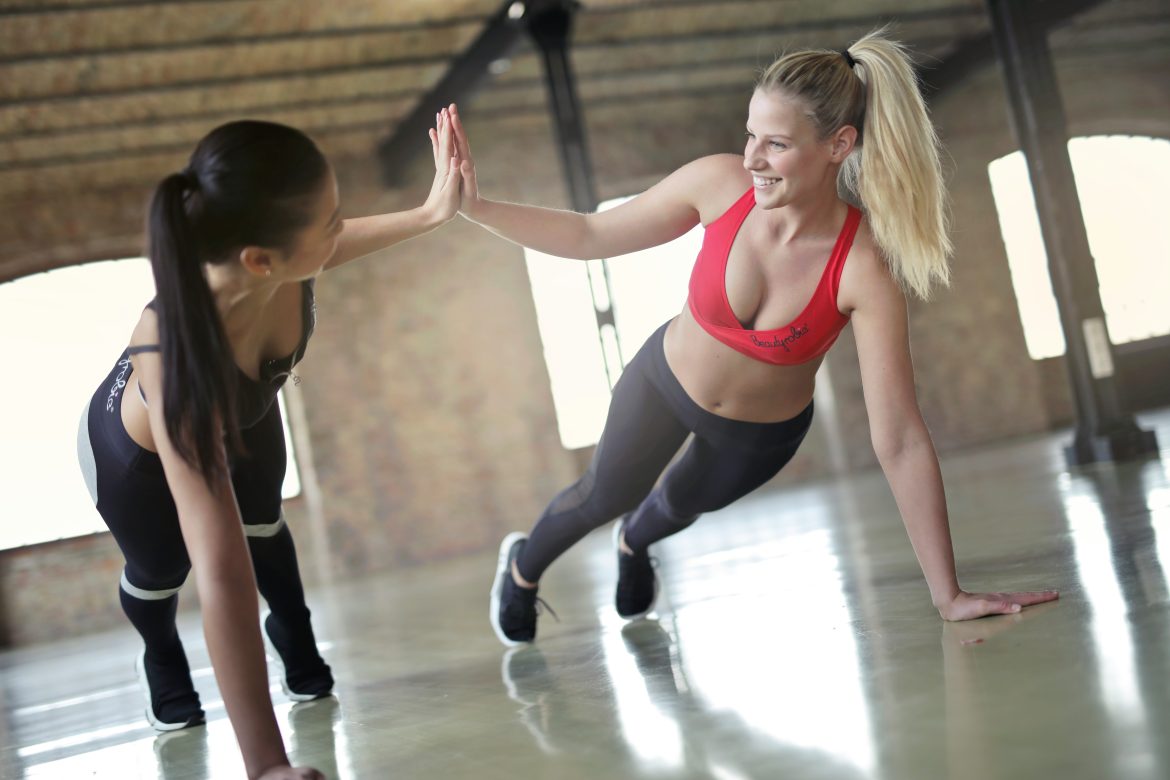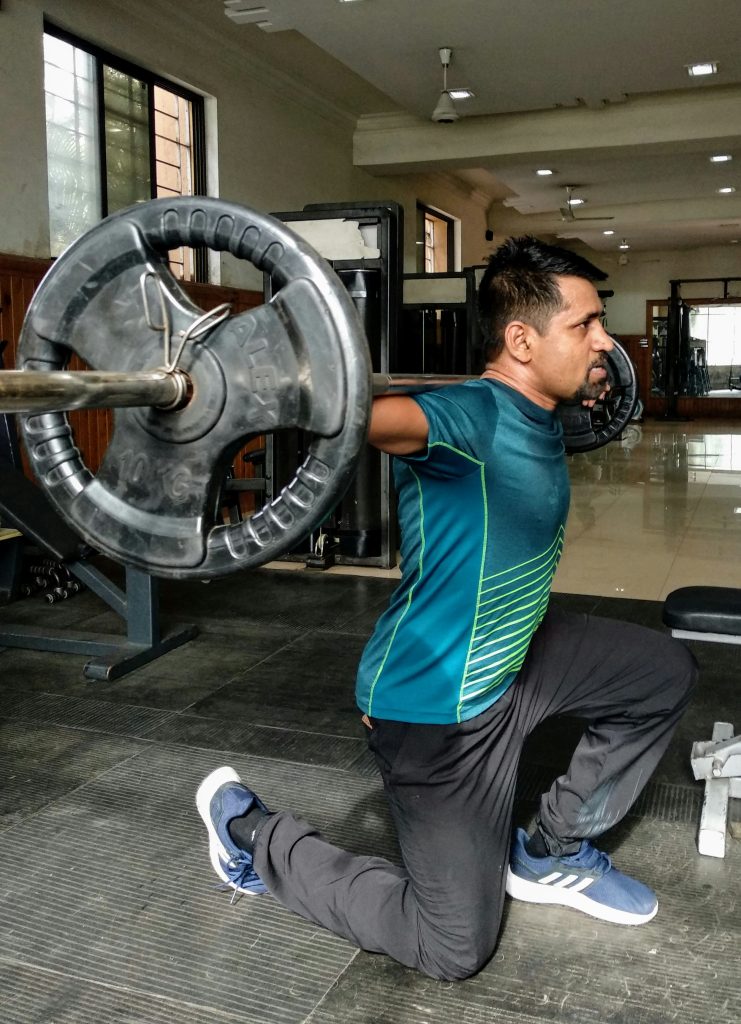In recent years, the increase in individuals beginning their fitness routines reflects a significant shift towards health consciousness. At Fitness0.com, we recognize the complexities that beginners face and offer comprehensive fitness tips specifically designed for this group. Initiating a fitness routine involves a commitment to improving one’s health and lifestyle.
Discover beginner workout plans, understand fitness basics, and learn about simple exercise routines that lay the groundwork for your health and fitness journey. With Fitness0.com, beginning your fitness journey is straightforward and promising. The abundance of information available can be overwhelming, but our aim is to provide clear, beneficial guidance that ensures your initial steps in fitness are both confident and informed.
“Did you know that starting with a well-structured fitness plan can increase your chances of long-term success by up to 50%? Let’s begin your transformation with these foundational steps.”
This comprehensive guide covers various essential aspects of fitness:
- Fitness Basics: Starting Your Journey
- Essential Workout Plans for Newbies
- Nutrition Fundamentals for Fitness
- Overcoming Fitness Plateaus
- Smart Recovery and Rest
With the right guidance, achieving your health goals becomes more attainable. Explore our comprehensive fitness tips, and begin your path to a healthier, more energetic lifestyle. Your journey to improved health and well-being starts with Fitness0.com, guiding you through each step with expertise and support.
Fitness Basics: Starting Your Journey
Identifying your body type is essential in tailoring your fitness strategy. Whether you are an ectomorph with a slim, lean build, a mesomorph with a natural athletic build, or an endomorph who tends to gain weight easily, recognizing your category can significantly influence your workout and nutrition plans. Tailoring your fitness approach according to your body type can optimize your results and offer a more customized fitness experience.
Here’s a simple table summarizing the three primary body types and their suggested fitness focus:
| Body Type | Characteristics | Suggested Focus |
|---|---|---|
| Ectomorph | Slim, lean build | Gaining muscle mass |
| Mesomorph | Natural athletic build | Maintaining muscle tone |
| Endomorph | Tends to gain weight | Weight loss, toning |
Importance of Setting Achievable Goals
Effective goal setting acts as a guide, directing your efforts and sustaining motivation. Construct your goals considering your current fitness level, lifestyle, and potential constraints. Dividing larger, long-term objectives into smaller, manageable short-term goals can make the process more approachable. Continuously review and adapt your goals to reflect your progress and experiences. A strategic approach to goal setting promotes a consistent and progressive fitness routine.
“Did you know that individuals who set SMART (Specific, Measurable, Achievable, Relevant, Time-bound) goals are 30% more likely to achieve their fitness objectives than those who don’t?”
Beginner’s Guide to Fitness Terminology
Comprehending common fitness terms is crucial for beginners. Understanding the distinction between terms such as “reps,” “sets,” “cardio,” and “strength training” is foundational. Recognizing the differences between aerobic (cardio) and anaerobic (strength training) exercises, for instance, can help in crafting a balanced workout plan. Familiarity with fitness terminology boosts your confidence and enhances your ability to engage effectively in workout programs and discussions with fitness professionals and enthusiasts.
In summary, understanding the basics of fitness is vital for a successful start to your fitness journey. Acknowledging your body type, setting well-defined goals, and getting acquainted with fitness terminology forms a strong foundation for your fitness path. These fundamental insights are pivotal in creating an effective and personalized fitness plan.
Essential Workout Plans for Newbies
Home workouts provide a convenient and cost-effective way to start a fitness routine. These workouts can be customized to your available space, time, and resources. Bodyweight exercises like push-ups, sit-ups, and squats, along with yoga and Pilates, offer diverse options. Regularly incorporating these exercises into your routine can improve physical strength, endurance, and mental health. The key is to utilize available resources and progressively improve your fitness level.
Incorporating Cardio for Overall Health
Cardiovascular exercises are essential in any fitness regimen, particularly for beginners. Activities like walking, jogging, cycling, or swimming increase heart rate and promote cardiovascular health. They are effective in burning calories, reducing body fat, improving lung capacity, and decreasing stress. For beginners, it’s important to start with low-intensity cardio exercises and gradually increase the intensity and duration as fitness improves. Consistent engagement in cardio workouts is beneficial for heart health and overall well-being.
“Studies show that engaging in regular cardio activities can reduce the risk of heart disease by up to 35%.”
Strength Training Basics
Strength training is crucial for developing muscle strength, increasing metabolic rate, and enhancing bone density. This form of exercise involves various techniques that target different muscle groups, promoting muscle growth and joint flexibility. It includes the use of weights, resistance bands, or bodyweight exercises. Beginners should prioritize learning proper exercise techniques, starting with lighter weights, and gradually increasing intensity to avoid injuries and ensure progressive improvement. Strength training is beneficial for physical conditioning, enhancing both body composition and mental resilience.
- Increases muscle mass and metabolic rate.
- Improves bone density and joint flexibility.
- Enhances physical and mental endurance.
Engaging in beginner workout routines is crucial for establishing a solid foundation in fitness. Incorporating simple home workouts, starting with basic cardio exercises, and understanding the principles of strength training are fundamental steps. These activities contribute to a balanced and comprehensive approach to fitness. It’s important to continue exploring these areas to establish a strong base that supports your health and fitness objectives, enabling you to progress effectively and with confidence.
Nutrition Fundamentals for Fitness
Macro-nutrients—carbohydrates, proteins, and fats—play specific roles in supporting bodily functions and aiding in fitness. Carbohydrates serve as the primary energy source, especially important for energy-intensive workouts. Proteins are essential for muscle repair and growth, a critical aspect for anyone involved in regular physical activity or strength training. Fats are necessary for cellular health and hormone production, among other functions. Achieving a balance of these macro-nutrients is crucial for optimizing energy, supporting muscle development, and maintaining overall health.
Here’s a simple table outlining the roles and food sources of these macro-nutrients:
| Macro-nutrient | Role in the Body | Suggested Food Sources |
|---|---|---|
| Carbohydrates | Primary energy source | Whole grains, fruits |
| Proteins | Muscle repair & growth | Lean meats, legumes |
| Fats | Supports cell health | Nuts, avocados, olive oil |
Importance of Hydration in Fitness
Hydration is essential for numerous bodily functions, including temperature regulation, nutrient transport, and metabolic processes. Adequate hydration is particularly crucial for individuals engaging in physical activity. It aids in performance enhancement, injury prevention, and efficient recovery. Adherence to daily hydration guidelines is vital for ensuring optimal bodily function during exercise and in daily life. It’s important to note that thirst is a late indicator of dehydration, making regular and consistent water intake essential.
“Adequate hydration can increase performance during exercise by up to 20%, according to recent studies.”
Simple, Healthy Meal Ideas for Beginners
Incorporating healthy eating into your fitness routine is manageable with straightforward and nutritious meal ideas. Focusing on whole foods such as vegetables, fruits, lean proteins, whole grains, and healthy fats is key. Meal planning helps in avoiding impulsive, less healthy food choices and ensures the availability of necessary ingredients. Cooking your own meals allows for control over portions and ingredient quality, aiding in adherence to nutrition goals. The aim is to establish consistent, healthy eating habits, not perfection. Gradual, sustainable changes can significantly impact overall health and fitness outcomes.
Nutrition is a critical component of a comprehensive fitness approach. Understanding the balance of macro-nutrients, the importance of hydration, and the integration of healthy meal planning are crucial for supporting fitness efforts and overall well-being. Application of these nutritional principles fortifies the foundation for a fit, balanced lifestyle, enabling effective progress and achievement in fitness endeavors. With a solid nutritional approach, your body is equipped to meet the demands of physical activity, ensuring efficient recovery and realization of fitness goals.
Overcoming Fitness Plateaus
Experiencing a plateau in fitness is a common phase where progress seems to stall despite maintaining a consistent workout routine. To overcome a plateau, it’s crucial to first acknowledge it and then reassess your fitness goals. Increasing workout intensity or introducing new routines can stimulate your body differently, potentially reigniting progress. Varying your workouts can also prevent your body from adapting to a specific routine, a common reason for hitting a plateau.
Staying Motivated: Tips and Tricks
Maintaining motivation during a plateau is key to pushing through this phase. Establishing smaller, short-term goals can provide a sense of accomplishment and sustain motivation levels. Participation in a fitness community or partnership with a workout buddy can offer necessary encouragement and accountability. Reflecting on the reasons you started your fitness journey and recognizing the progress made can also serve as significant motivators. Additionally, tracking your workouts and progress through journals or visual means can help maintain focus and motivation.
“Changing your workout routine every 4 to 6 weeks is recommended to avoid plateaus and keep your body challenged, according to fitness experts.”
Adapting Your Routine for Continuous Progress
Adaptation of your workout routine is fundamental for overcoming a plateau and ensuring continuous improvement. Introducing new exercises, changing workout intensity, or adjusting frequency can challenge your body anew, prompting further progress. Reviewing and potentially revising your nutrition and recovery strategies is also crucial, as these play a significant role in your overall fitness progress and can impact your ability to move beyond a plateau.
- Set small, achievable short-term goals.
- Engage with a supportive fitness community.
- Keep a workout journal or track progress visually.
Overcoming fitness plateaus is an integral part of the fitness improvement process. Identifying plateaus, employing motivation strategies, and adapting workout routines are essential steps to ensure continued advancement in your fitness journey. By applying these strategies, you can navigate through plateaus with confidence and maintain progress towards your fitness goals. With a structured and responsive approach, fitness plateaus can be transformed from challenges into opportunities for growth and development in your fitness routine.
Smart Recovery and Rest
Incorporating rest days is essential for muscle repair and recovery. These days allow for replenishing energy stores and repairing tissue damage. Allocating specific days for rest in your fitness schedule is crucial to allow your body to recover adequately and prepare for future workouts, preventing overtraining syndrome.
Sleep’s Role in Fitness Recovery
Sleep is essential for numerous recovery processes within the body, including muscle repair and hormonal balance. Ensuring a consistent sleep schedule and adequate sleep duration is paramount for optimal recovery and performance enhancement.
“Growth hormones, essential for muscle repair and tissue growth, are predominantly released during deep sleep stages.”
Active Recovery Techniques for Beginners
Active recovery, involving low-intensity exercise during the recovery phase, aids in maintaining blood flow, which facilitates the delivery of nutrients to muscles and the removal of waste products. These methods aid in reducing muscle stiffness, maintaining flexibility, and promoting overall muscle health.
- Promotes blood circulation and nutrient delivery to muscles.
- Helps maintain mobility and flexibility.
- Reduces muscle stiffness and soreness.
Incorporating rest and recovery strategies into your fitness routine is vital for a balanced and effective approach to fitness. Acknowledging the importance of rest days, optimizing sleep for recovery, and integrating active recovery methods are crucial practices that promote muscle restoration and prevent overtraining. By prioritizing rest and recovery, you enable your body to perform optimally, paving the way for sustained progress and improved well-being.
Conclusion: Fitness0.com’s Easy Fitness Tips for Beginners
Fitness encompasses more than just physical exercise; it includes a comprehensive approach involving understanding your body’s needs, providing it with proper nutrition, and ensuring it has adequate rest and recovery time. This guide has detailed each essential component of a successful fitness regimen, from the foundational understanding of fitness basics to the implementation of advanced recovery techniques.
Main Insights
Recognizing your body type and setting achievable goals are the first steps in creating a personalized and effective fitness plan. A workout routine that balances cardio and strength training is essential for all aspects of physical fitness. Nutrition is vital in supporting your fitness journey, focusing on balancing macro-nutrients and staying hydrated to fuel your body correctly and support your fitness activities.
Overcoming fitness plateaus requires strategic adjustments in your routine and staying motivated through setting short-term goals and tracking progress. Recovery is fundamental; integrating rest days and optimizing sleep are crucial for muscle repair and overall well-being. Active recovery methods can further enhance this process, promoting muscle flexibility and reducing stiffness.
Take the first step towards transforming your lifestyle today. Implement these comprehensive strategies, from honing your workouts and nutrition to optimizing recovery.
- Understand and cater to your unique body type and fitness goals.
- Create balanced workout plans that include both cardio and strength training.
- Focus on nutrition by balancing macro-nutrients and ensuring proper hydration.
- Overcome fitness plateaus by adjusting your routine and maintaining motivation.
- Prioritize rest and recovery, understanding their roles in muscle repair and overall fitness.
In summary, a comprehensive approach to fitness involves a combination of well-planned workouts, balanced nutrition, and adequate rest and recovery. By maintaining dedication to your fitness regimen and incorporating these principles, you’re setting the stage for a healthier, more active lifestyle.
Citations:
- 18 Fitness Tips These Trainers Always Give Their Beginner Clients, SELF
- 10 fitness tips for beginners, Haven Life
- How to Start Exercising: A Beginner’s Guide to Working Out, Healthline


